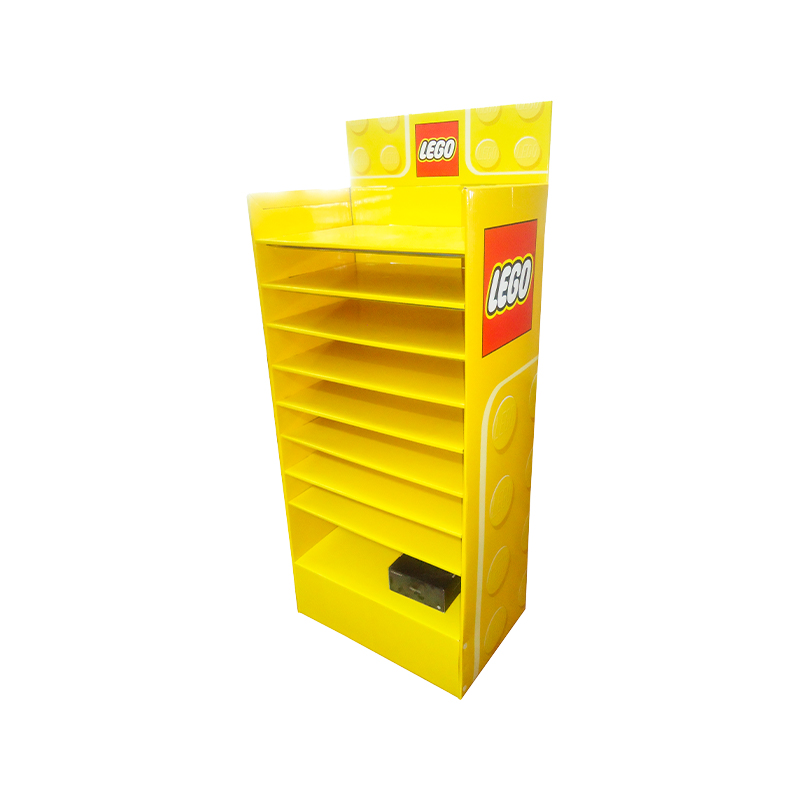-
 +86-0557-3781111 / +86-0571-56396277
+86-0557-3781111 / +86-0571-56396277
 +86-0557-3781111 / +86-0571-56396277
+86-0557-3781111 / +86-0571-56396277
The materials used for creating durable and aesthetically appealing stationery display stands must strike a balance between strength, visual appeal, cost-efficiency, and the ability to showcase products effectively.
Durability and Transparency: Acrylic is a popular choice because of its clarity, which allows for excellent visibility of the products being displayed. It’s also highly durable and resistant to cracking and breaking, making it ideal for both retail and long-term use.
Aesthetic Appeal: Acrylic can be easily molded into various shapes and sizes, offering a sleek, modern, and professional look. It’s also customizable with colors and printed logos or designs.
Drawbacks: While acrylic is resistant to breakage, it can scratch easily, which could affect the aesthetic appeal over time if not handled properly.
Natural and High-End Feel: Wood, particularly plywood, MDF (Medium Density Fiberboard), or solid wood, offers a classic and warm aesthetic. It’s highly customizable and can be finished with paint, stains, or varnishes to suit the store’s theme or brand.
Strength and Stability: Wood is strong and durable, making it an excellent choice for heavier stationery products or for creating large display stands.
Drawbacks: Wood is more susceptible to scratches, dents, and moisture damage than acrylic or metal. However, it can be treated or sealed to improve longevity.
Strength and Durability: Metal is known for its robustness, making it a suitable material for displays that need to hold heavier products. Aluminum is lightweight and corrosion-resistant, while steel is heavier but incredibly strong.
Modern Aesthetic: Metal can give a more industrial or modern feel to the display. It can be powder-coated in various colors or left with a polished, brushed, or matte finish for a sleek, contemporary appearance.
Drawbacks: Metal can be prone to scratches and may need to be treated or coated to prevent rust, especially in humid environments.
Cost-Effective and Lightweight: Cardboard is a low-cost option often used for temporary or promotional displays. It is lightweight and easy to transport and can be printed with vibrant designs or branding to attract attention.
Eco-Friendly Option: Corrugated cardboard is biodegradable and recyclable, making it a popular choice for companies looking to prioritize sustainability.
Drawbacks: Cardboard displays are not as durable as acrylic, wood, or metal. They are better suited for short-term displays and may not be as resilient in high-traffic areas.
Durability and Flexibility: Plastics like polycarbonate and PVC are durable, lightweight, and often more affordable than acrylic. They can be molded into different shapes and provide a clear or opaque finish, depending on the design requirements.
Versatility: These plastics can be printed on or treated with special coatings for scratch resistance or UV protection. They’re also highly customizable in terms of color and texture.
Drawbacks: While durable, plastic can still suffer from scratches and discoloration over time, particularly when exposed to sunlight.
Lightweight and Flexible: Fabric is often used for displays that require flexibility, such as banners, backdrops, or small display pockets. It is lightweight, easy to transport, and can be printed with custom designs, logos, and colors.
Soft Touch and Visual Appeal: Fabric adds a softer, more inviting look, which is great for creating a homely or approachable display.
Drawbacks: Fabric is less sturdy for holding heavy items, so it’s generally used for smaller displays or when combined with other materials like wood or metal for support.

Premium and Elegant Appearance: Glass is a high-end material often used for upscale stationery display stands. It’s clear, durable, and offers a sleek, premium look that can elevate the aesthetic of any retail space.
Strength and Cleanliness: Glass is easy to clean, making it ideal for displays that require a polished, refined appearance.
Drawbacks: Glass is fragile and can break easily if not handled with care. It also tends to be more expensive and heavier than other materials, which can increase shipping and setup costs.
Versatility and Customization: High-Density Fiberboard (HDF) and Medium Density Fiberboard (MDF) are engineered wood products that offer a smooth finish and can be easily shaped, painted, and laminated. These materials are a cost-effective alternative to solid wood.
Durability and Design Flexibility: They offer a great balance between strength and aesthetic appeal, with the ability to achieve detailed design features, including logos, grooves, and cutouts.
Drawbacks: These materials can be heavier than alternatives like cardboard, and while durable, they are more prone to moisture damage if not sealed properly.
Sustainable and Unique Aesthetic: Rattan or wicker can provide a natural, eco-friendly look, often used in boutique settings or for displays that want to highlight their organic or handmade qualities.
Lightweight and Functional: These materials are typically lightweight and easy to move around, providing an attractive, yet practical display option.
Drawbacks: Rattan or wicker displays may not be as durable as metal, wood, or acrylic, and they may not be as suitable for high-volume or heavy-duty use.
Sustainable and Innovative: Bamboo is a highly sustainable option that’s gaining popularity due to its fast-growing nature and strength. It’s an eco-friendly alternative to wood, offering a similar aesthetic but with lower environmental impact.
Recycled Materials: Using recycled plastics or other eco-friendly materials can enhance the sustainability of the display stand, making it more appealing to environmentally-conscious consumers.
Drawbacks: Eco-friendly materials might come with a higher initial cost or may not always be as durable as traditional materials, depending on the specific application.
Annhiu Address: Yishan Road and Qingshengou Road Intersection, Suzhou Economic Development Zone, Anhui, China
Tel: +86-0557-3781111
E-mail: [email protected]
Hangzhou Address: Building 3, No.286, Renliang Road, Renhe Street, Yuhang District, Hangzhou, Zhejiang, China
Tel: +86-0571-56396277
E-mail: [email protected]
Copyright © Hangzhou Shengpin Packaging Co., Ltd. All Rights Reserved.
